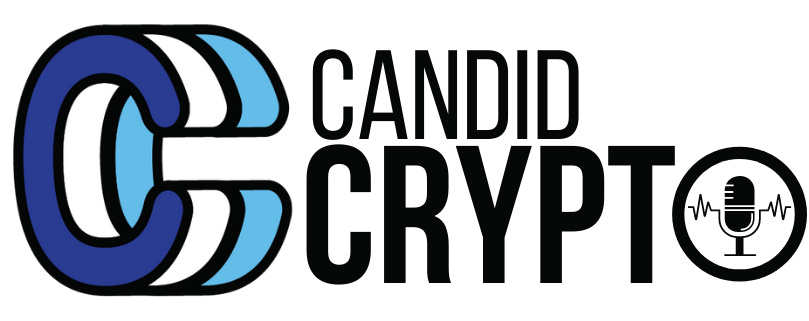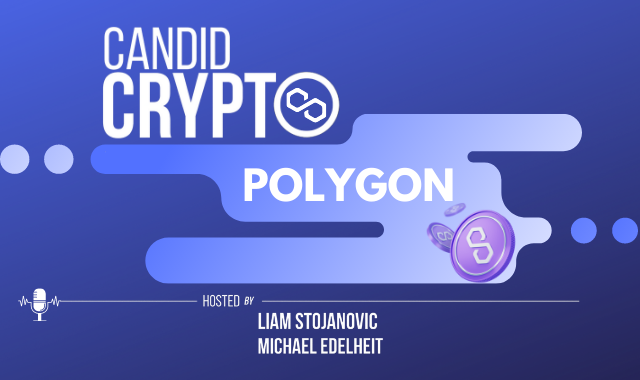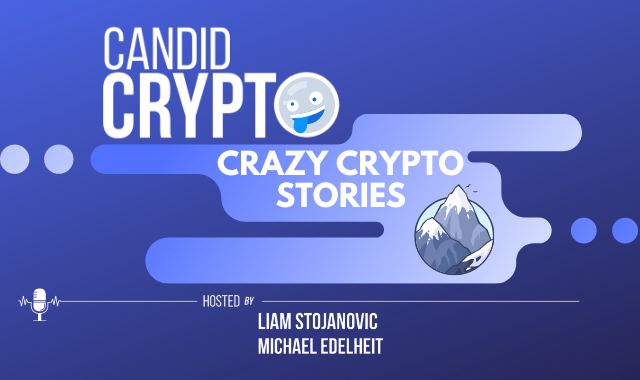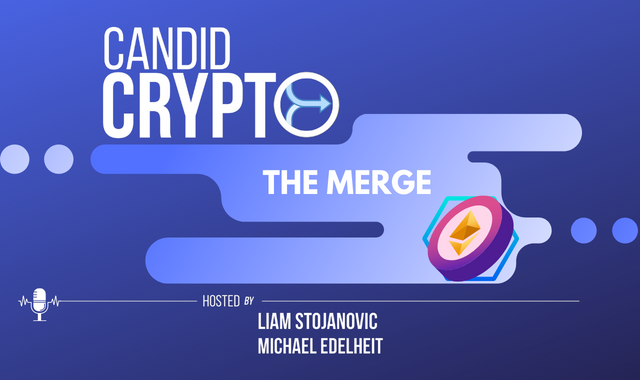009: Cardano (ADA)
What is Cardano? What is ADA? How is Cardano different than other blockchains like Ethereum? Tune in and learn more about one of the fastest growing altcoins.
Please leave a comment and let us know what you think about this episode. You can find Candid Crypto on all your favorite podcast platforms, so please like and subscribe to stay up to date on everything crypto!
In addition, every Candid Crypto episode is transcribed so you can easily understand everything that was discussed.
Episode Transcription – Cardano
Michael 00:04
Welcome to another episode of Candid Crypto. In today’s episode, we’re going to cover What is Cardano?
Liam and I are going to discuss the main differences between Cardano and other Blockchains like Bitcoin and Ethereum. We’re also going to speculate a little bit at the end about the future of Cardano. And our initial thoughts. Unlike BAT, we had very little prior knowledge about Cardano going into this episode. So we learned a lot in the research phase. And we’re excited to jump into it.
So Liam, at the core, what is Cardano?
Liam 00:46
Cardano is an open source proof of stake blockchain, which basically means you can program on top of it, and you can build smart contracts.
Liam 00:59
So this thing began in 2015 as a white paper. And the goal was to address the existing scalability and interoperability problems that existing Blockchains had. They finally launched this thing in 2017. Since then, the price has gone pretty bonkers. We hear that a lot in crypto, but this thing did go up in value significantly.
Michael 01:28
Yeah, and it’s currently the Number 5 Ranked Coin when you look at the market cap, so it definitely piqued our interest, and we had to learn more about it. And when we talk about Cardano, you often hear them coined the phrase, Third Generation Blockchain. So they say Bitcoin is First Generation Blockchain that allows you to just simply do digital transactions. Ethereum is that Second Generation Blockchain, where you start involving DAPPs, and smart contract capability, and it’s a programmable Blockchain. And Cardano takes it a step farther. And it’s a programmable Blockchain. But it’s also a proof of stake Blockchain.
Liam 02:20
So that basically means it’s significantly cheaper.
Michael 02:23
Yeah, proof of stake over proof of work has a lot of benefits and even Ethereum is moving towards proof of stake. But we’ll dive into the kind of advantages to proof of stake Blockchain and really what it is. And just one minute, I did want to just quickly cover kind of the background in the history of Cardano. It started as a research project. And that was really at the core of this thing. It was started and founded by Charles Hoskinson. And he was actually a co-founder to Ethereum. So you’ll notice there are a lot of similarities between Ethereum and Cardano. Blockchain, except for this entire research project was to try to improve current crypto networks and Blockchains. And they do deliver in some capacity to that.
Really, at the core of this thing, it’s very academic, and all the research and technical specifications that underpin Cardano are publicly available. And all of the Cardano development activities are published online and verified by the academic community they have in place. That seems to be significantly different than how Ethereum and the Ethereum community acts. Would you agree or disagree, Liam?
Liam 03:46
The Ethereum community largely puts together hackathons that eventually turn into market ready products, they move fast and they break things. It’s a very different approach than what Cardano was going for, which is the slow moving but academic and rigorous approach to creating a new paradigm for how Blockchain functions?
Michael 04:10
So Liam, you mentioned that the Cardano Blockchain aims to be more secure, scalable and functional. How exactly do they do that by being a proof of stake Blockchain?
Liam 04:23
So proof of stake at its core uses much less energy than proof of work. You’ve likely heard about the problem with Bitcoins, and energy consumption securing the network. There are many different arguments out there, but in the day, we are using a significant amount of electricity to keep the Bitcoin and Ethereum networks going, as well as all the other networks that require Proof of Work mining.
Proof of Work involves a lot of graphics cards warehouses full of them. In fact, the energy consumption and the hardware requirements are pretty enormous.
Proof of Stake is different. You run a node that validates activity on the network. The computational requirements in terms of graphics card processing power are just not there. The network is validated in other ways. Ethereum wants to go from proof of work to proof of stake because the proof of stake mechanism they have requires you to stake Ethereum to be a validator. In essence, Ethereum wants you to do proof of stake. Because if you are a validator, yeah, you’re not using supercomputers to validate the network, you can just use a regular server, maybe even a Raspberry Pi. At the same time, if you go offline for too long, and you are unavailable so to say, you can lose the Ethereum you staked on the network. And that’s the incentive to keep people actively participating as nodes.
Michael 05:55
What I’ve picked up is that the more you stake on the Cardano Blockchain, the higher chance there is that the next block will be generated from your staked ADA. And that incentivizes people to provide more staking because they can potentially make more money.
Liam 06:20
Yeah, so you compound the staked cryptocurrency, as long as you run your validator, your node, as you should you get rewarded. So that’s the incentive there. And it creates this feedback loop where value is generated from the computation and network resources to keep the network up.
Michael 06:42
And specifically, the Cardano is proof of stake protocol is called Ouroboros. And it was delivered with several peer reviewed papers presented at top tier conferences, and within a few different publications within the cybersecurity and cryptography space. So in Cardano is not mined, the Ouroboros security is often called out as a huge advantage over other Blockchains.
Liam 07:13
So there’s other stuff, right? It’s not just the fact that it’s proof of stake. They also built many other goodies for nerds like me to tinker around with on the weekends. This includes “Haskell, which is a secure functional programming language that encourages building systems with pure functions”. So you can take those functions, test them in isolation, and move them to any other module with very little friction. In non-nerd speak, it’s good programming practice, it’s what you want when you’re dealing with money and Blockchain.
So it also has another property, it’s interoperable. And that means that there’s cross chain capabilities.
Michael 08:04
Cardano is being developed to support cross chain transfers, multiple token types, and commonly used smart contract languages. That is huge when compared to Ethereum and other Blockchains. They really are just working on their network and their protocols. They’re not really thinking about this cross chain capability. I think that is a missed opportunity. Something that gets me excited about Cardano. Yet, I just haven’t seen these cross chain capabilities in action. So I am skeptical about that.
Liam 08:43
The Binance smart chain, you can use their bridge and get stuff on and off the Ethereum network onto the Binance network and vice versa, which is pretty slick. Their approach was, ‘hey, we built this common use it’.
So very different incentives between Cardano and maybe other crypto projects. It’s something to bear in mind. So there’s other technical differences as well. I mean, frankly, there are a lot of innovations, you could say that Cardano purports, we can’t get into all of it in these short episodes. But for anyone trying to learn more cardano.org is a great place to go. And we heavily relied on it for this episode.
So let’s say you’re trying to buy Cardano where do you go? Who do you talk to? And what are the communities around this token?
Michael 09:38
Yeah, so it’s really important to take note that when people say they invested in Cardano, they’re really talking about they invested in their native token called ADA, and ADA is similar to Ethereum and Ether. Ether is The actual cryptocurrency on the Ethereum network. Same thing with Cardano. ADA is the native token and cryptocurrency on the Cardano network.
Michael 10:10
So when people say they invested, they’re really buying ADA. And a fun fact that we learned researching, is that ADA was actually inspired and named after Ada Lovelace, which was a 19th century mathematician who is often recognized as the first computer programmer. So definitely very nerdy stuff. You can see how academia is built in at the core of Cardano.
Liam 10:42
Cryptocurrency is already nerdy enough. And this just multiplies the nerd factor. Let’s say I’m trying to get my hands on some ADA. Where can I get it?
Michael 10:55
Well, I’ve noticed that it’s on most of the popular exchanges. Coinbase, Kraken, Binance. I did not see it on Gemini. Have you seen it on Gemini?
Liam 11:07
No.
Michael 11:08
Yeah, so that’s kind of a red flag. It’s obviously still maturing, trying to get on all the platforms to get that main adoption from the entire crypto community. But you know, the main ones, you can still buy it on most of the centralized platforms. And they’re definitely trying to do more with DeFi. So we’ll see if there are decentralized platforms that utilize the Cardano network in the future. That will be really interesting, but for the most part, all the popular exchanges.
Liam 11:41
And so what are the overall takeaways here? Like, are you bullish on this, Michael? How are you feeling? What’s your temperature?
Michael 11:49
Overall, I’m cautiously optimistic about Cardano. In general, I am very bullish on the Ethereum blockchain and smart contracts and DeFi being the future. And potentially one day could maybe overtake Bitcoin, you know, we’ll see. But Cardano is kind of taking a very similar approach where it’s heavily rooted in as a programmable Blockchain, and it enables smart contracts DeFi. And that interoperable capabilities is really appealing to me. And I would be interested to see how it grows. And I think you can like Ethereum and Cardano. At the same time, you can almost use Cardano as a hedge against Ethereum, just in case the theorem doesn’t overtake Bitcoin and Cardano is the one that does it.
Michael 12:46
What about you, Liam?
Liam 12:48
The Cardano project, to me, is an academic, rigorous, and battle tested approach to programming. But I think the ecosystem has to mature to really take off. There’s a lot of programming, a lot of white papers, and a lot of content on their website that makes the project seem established and supportive. I think there might be some aspect of security through obscurity. And I use that term loosely to really describe inferred value from the barrage of academic rigor you experience on their website.
So what that means is the average person might glance off to the website, and see tons of peer-reviewed papers and documentation. I think the project’s legit. It is possible that this is a veil for lack of market ready products. As always, do your own research ladies and gentlemen.
Thank you so much for tuning in to this week’s episode of Candid Crypto. If you listen to this episode, and you think to yourself, Wow, I have things to add content wise to what Liam and Michael were talking about. Please reach out to us Hello @CandidCryptoPodcast.com or you can go to our website CandidCryptoPodcast.com and find our various socials there. We’re on pretty much everything now. You’re on our Discord, join our subreddit, we were pushing out content and we’d love to add you to the discussion.
Michael 14:22
And stay tuned. We are unveiling our brand new website on Episode 10 Next week, and we’re actually going to do a hard launch of Candid Crypto. So thank you for everybody that has tuned in over the past few weeks. On this first set of episodes. We’re really excited to continue the journey.
Liam 14:42
It’s been a lot of fun. So thank you all very much and stay tuned for more content. Until next time…







